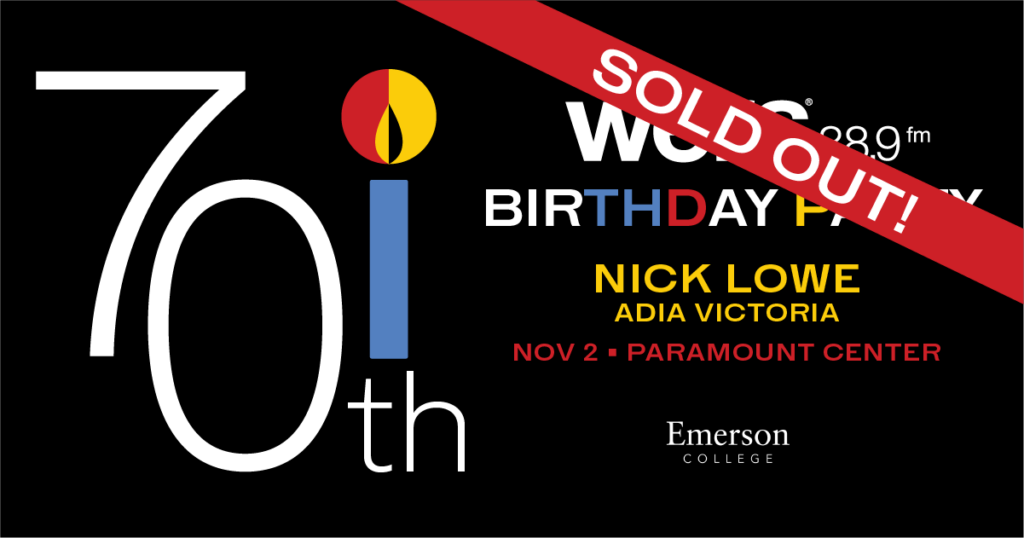
Each week of Black History Month, we open the 88.9 Vault of Soul with profiles of iconic soul pioneers. Continue reading to take a deep dive into Roberta Flack’s incredible legacy.
By Avieana Rivera, Staff Writer
BIOGRAPHY
Roberta Flack, also known as Rubina Flake, was born in Black Mountain, North Carolina on February 10, 1937, and later raised in Arlington, Virginia. Flack was heavily involved in the church growing up along with her mother Irene, who was a church choir organist. Religious spirituals heavily influenced Flack’s love of music. She began learning piano very early on, and was a prodigy of sorts. By age 15, her piano skills landed her a scholarship to Howard University, making her one of the youngest students to ever enroll there.
FLACK’S DAYS IN D.C.
During her days at Howard, Roberta Flack discovered her love for singing, and changed her major from piano to voice. She also assisted the school’s choir conductor, conducted for her sorority Delta Sigma Theta’s quartet, and directed a production of Aida. Outside of school, Flack was giving private piano lessons and working her mother’s old job as a church choir organist. After discouragement from a vocal coach, she later changed her major to music education and graduated with her Bachelor’s degree in 1958 at only 19, and went back to Howard for graduate school. During grad school, Flack was a student teacher, becoming the first Black teacher at an all-white school in Maryland. Flack was never able to finish her graduate degree, after her father’s death caused her to unenroll and start her teaching career in order to support herself.
TEACHER BY DAY, PERFORMER BY NIGHT
While her teaching career took off, Flack began working at Tivoli Club as an accompanist. She began singing during intermission and eventually worked her way into a permanent position as the main act at 1520 Club, where she would sing and play piano. It was then when her vocal coach, Frederick "Wilkie" Wilkerson, told her that her voice would be better suited for pop music. That transition got her hired at Mr. Henry’s, the nightclub where Flack would be discovered. It was Les McCann who heard her singing, and arranged for her to audition for Atlantic Records. She was signed to the label and released her debut album First Take, only three months later in June of 1969. Roberta Flack would then go on to record 15 more albums throughout her career, and change the face of music forever.
ROBERTA BECOMES RUBINA
It wasn’t until her fifth solo album, Feel Like Makin’ Love that Roberta Flack took on using her actual given name, Rubina Flake. Used as a pseudonym for her producing credits, Flack used this name when she took over for her producer Joel Dorn. Ironically, she used Rubina Flake as a way to break barriers of Black women in the music scene. Rubina helped Flack feel powerful and capable in the midst of racism, sexism and female producers being looked down upon in the music industry. This transition, among many of Flack’s other achievements, helped to solidify her title as one of the greatest artists in history.
WHO INFLUENCED ROBERTA FLACK
Roberta Flack has named her role models as Frank Sinatra and Nina Simone, although some would argue that her biggest influence is her classical and church-filled upbringing. Flack has stated in many interviews that classical elements continue to play large roles in her music, despite other influences. Flack has written across a multitude of genres including jazz, folk, pop, latin and rock. Some attribute her flexibility to her diverse influences.
WHO ROBERTA FLACK INFLUENCED
Through her great strides in the music scene, Roberta Flack has influenced many artists throughout her career, and even still, after her retirement in 2022. Through her work reviving classical sounds in modern music, she paved the way for artists such as Leonard Cohen, Laura Nyro, and Eugene Mcdaniels as well as contemporary artists like Lauryn Hill and the Fugees. Flack also influenced the genre of “quiet storm” R&B.
AWARDS AND OTHER HONORS
- Grammys, Record of the Year, “The First Time I Ever Saw Your Face” (1973)
- Grammys, Song of the Year, “First Time I Ever Saw Your Face” (1973)
- Grammys, Best Pop Vocal by a Duo, “Where is the Love” (1973)
- Grammys, Record of the Year, “Killing Me Softly” (1974)
- Grammys, Song of the Year, “Killing Me Softly” (1974)
- Grammys, Best Pop Vocal by a Female, “Killing Me Softly” (1974)
- American Music Awards, Favorite Female Artist (Soul/R&B) (1974)
- Induction into the North Carolina Music Hall of Fame (2009)
- Honorary Doctorate degree in the Arts from Long Island University (2017)
- DAR Women in American History Award (2022)
- Honorary doctorate from Berklee College of Music (2023)
SPOTLIGHT TRACKS
“KILLING ME SOFTLY WITH HIS SONG” (1973)
Arguably Flack’s most famous song, “Killing me Softly with His Song,” was originally composed by Charles Fox, with lyrics by Norman Gimbel and Lori Lieberman. The world first heard Flack’s version of this song at a concert featuring Flack and Marvin Gaye in 1972 where Flack performed it as an encore. After a wild response from the audience, Gaye told Flack not to perform the song again until it was recorded. So, record she did. The ballad features Flack’s soulful, angelic voice and masterful instrumental skills. It is much calmer than the infamous 1996 version by The Fugees and Lauryn Hill. An instant classic, the lyrics and smooth melodies blend together to create a masterpiece that anyone can enjoy.
“WHERE IS THE LOVE”
“Where is the Love” was written and first-sung by Donny Hathaway and Roberta Flack in 1972. They now sit among the ranks of the best soulful duo combinations. When they sang together, the two singer-songwriters seemed to bring out the best in one another. “Where is The Love” was — and is — the ultimate introspective chill check-in song. Each singer casually sang phrases deeply questioning each other's love and devotion in a mature manner which mirrored the individualism growing out of the 1970s. Other sparkling pairings from the two include their quiet-stormed duet “The Closer I Get To You” (1977), and upbeat dance groove “Back Together Again” (1980). The two fellow Howard University graduates have held a musical kinship with each other which transformed music for generations.
“THE FIRST TIME I EVER SAW YOUR FACE”
Another magical ballad, “The First Time I Ever Saw Your Face” features dream-like strings as Flack harmonizes with long, drawn out melodies. With brilliant piano accompaniment and a slow tempo throughout, the song perfectly captures the feeling of falling in love. The lyrics tell of love at first sight, but even without them, the sound might portray the message on its own. This song was a regular on Flack’s repertoire at Mr. Henry’s, and was an obvious choice for her first album. Though the song was written in 1957 by Ewan MacCole for Peggy Seeger, it has been covered many times and was ultimately popularized by Flack. It was used by Clint Eastwood in Play Misty for Me (1971), and spent six weeks at the top of the Billboard charts.
You can revisit past Vault of Soul articles here, featuring artists such as James Brown, Aretha Franklin, Marvin Gaye, and more.
Interested in exploring the soul genre beyond the vault? Be sure to tune into 88.9 every night between 10 pm and 2 am for The Secret Spot. Or, take a deep dive into R&B, Hip-Hop and the legendary voices of Soul alongside new and pioneering MCs by streaming ERS+.


